Submitted by WA Contents
The 3rd Istanbul Design Biennial kicks off this weekend and details about ’Are We Human’ revealed
Turkey Architecture News - Oct 17, 2016 - 13:12 15810 views

The 3rd Istanbul Design Biennial kicks off this weekend under the title ''Are We Human: The Design of the Species: 2 seconds, 2 days, 2 years, 200 years, 200,000 years'', curated by Beatriz Colomina and Mark Wigley. Organised by the Istanbul Foundation for Culture and Arts (İKSV) and co-sponsored by ENKA Foundation, Petkim and VitrA, the 3rd Istanbul Design Biennial will take place between 22 October and 20 November 2016 and will explore the intimate relationship between the concepts of ''design'' and ''human''.
The primary venues for the Biennale will be Galata Greek Primary School, Studio-X Istanbul and Depo in Karaköy, Alt Art Space in Bomonti, and Istanbul Archaeological Museums in Sultanahmet-will present more than 70 projects by designers, architects, artists, historians, archaeologists and scientists from 13 countries. Aimed at rethinking design from the very beginning of humanity, the biennial is organised in 4 overlapping “clouds” of projects: Designing the Body, Designing the Planet, Designing Life, and Designing Time.
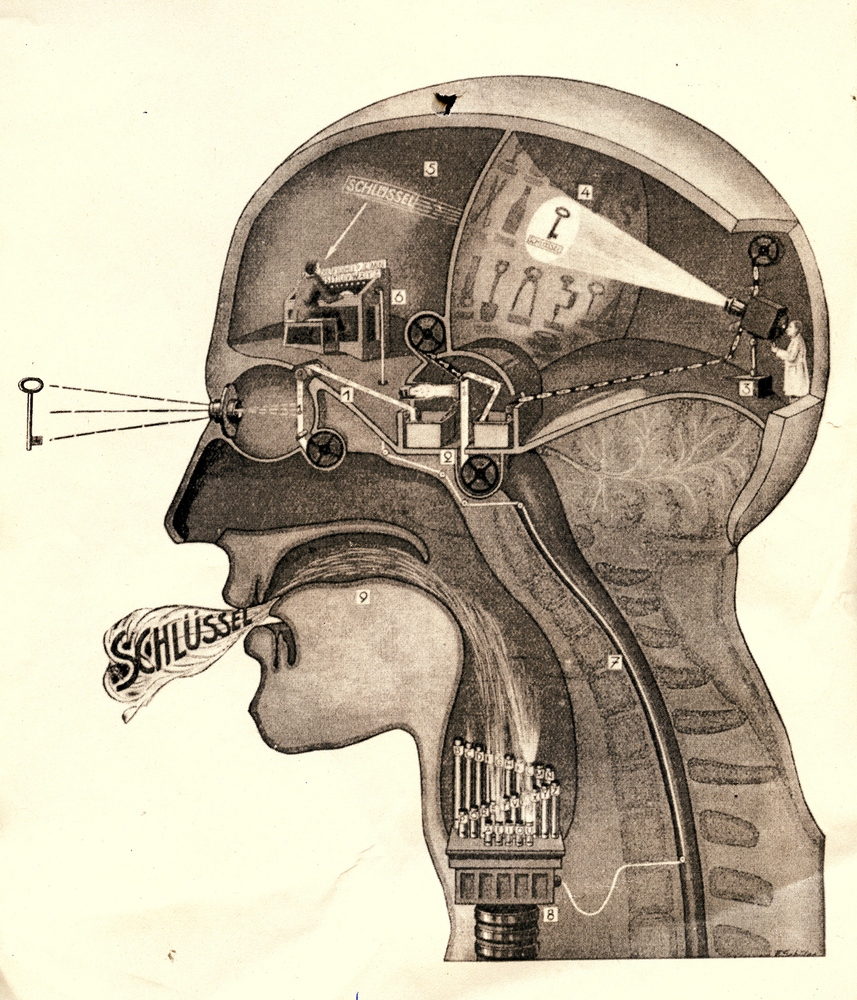
Fritz Kahn: Man Machine (Edited, 2009). Image Courtesy of "Are We Human" / 3. Istanbul Design Biennial
The exhibition is also expanded with 3 major initiatives: The Open Call for Videos that received over 200 submissions from 36 countries; the Superhumanity collaboration with e-flux that will present more than 50 international writers; and the Turkey Design Chronology project that has brought together an interdisciplinary group of experts in Turkey to build a remarkable inventory of design and working library.
In addition to the biennial exhibitions, the Academy Programme will provide a platform for universities in Turkey and abroad to contribute to the discussions around the theme of the biennial. While an extensive programme of panels and seminars will expand the reach of the exhibition beyond the field of design, the Creative Districts project will bring together visitors with designers and professionals in Beyoğlu and its surroundings, Beşiktaş, Şişli, Eminönü, Kuruçeşme and Sarıyer districts and Design Routes will include visits to several design offices, stores, ateliers, manufacturing sites and architectural buildings in different parts of the city.
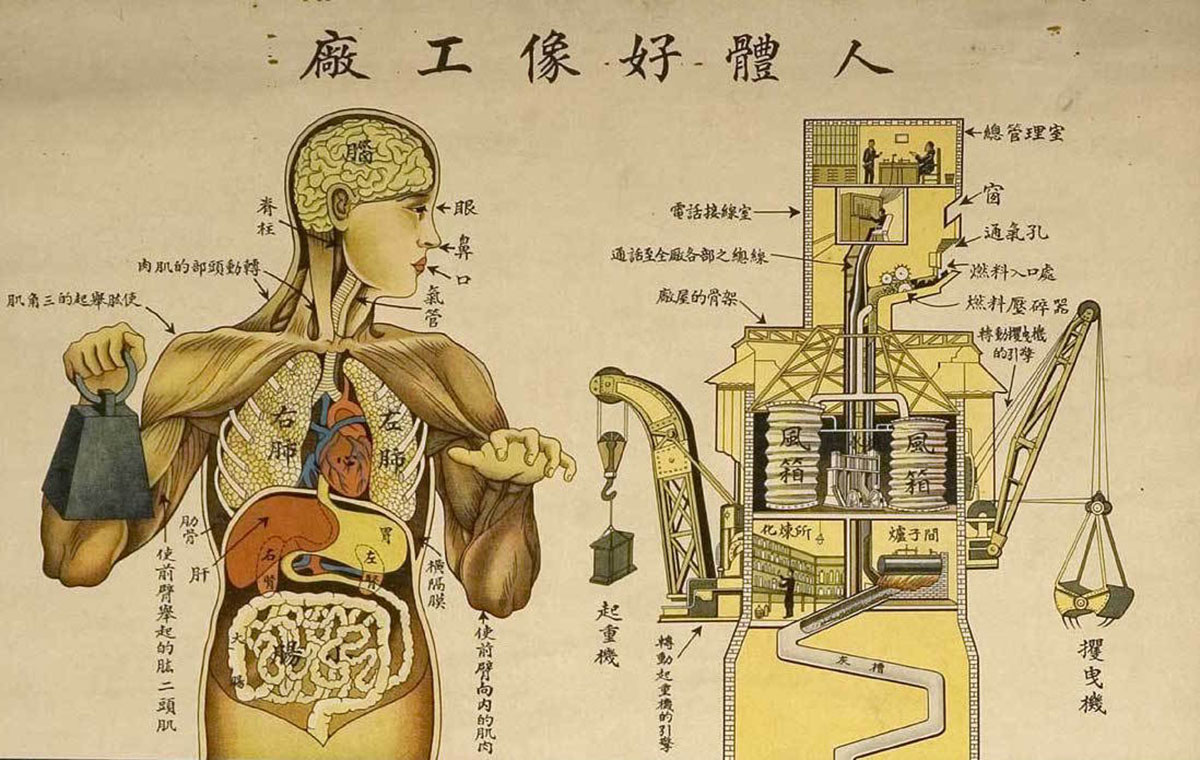
Chinese public health poster depicting the body as a machine (1930). Image Courtesy of "Are We Human" / 3. Istanbul Design Biennial
The exhibition design is by Andres Jacque and his Office of Political Innovation in Madrid. Graphic Design is by Pemra Ataç, Yetkin Başarır, Özge Güven, Okay Karadayılar, and Sarp Sözdinler. Evangelos Kotsioris is the assistant curator of the project and the online dimensions are being directed by Iván López Munuera.
''Preparations for the biennial continue on full pace and added: “The 3rd Istanbul Design Biennial embraces the city wider than ever with exhibitions in 5 different venues. Having acquired a unique place among the artistic and cultural events in Istanbul, the region and the world with its innovative and critical approach to design, Istanbul Design Biennial poses its questions around the theme of ''Are We Human?'' this year, and offers reflections on some of today’s most pressing questions through the lens of design. Awaiting us this year is a biennial that will foster a more intense discussion around its rich content, clustered around a striking theme. The 3rd Istanbul Design Biennial exhibitions will be open free of charge to the public for a period of 4 weeks,'' said Director of Istanbul Design Biennial, Deniz Ova.
''We profoundly believe that cultural events have the power to unify and heal; the reason why we are working towards the biennial with great enthusiasm, together with our participants and our team. Altogether, we will be looking at different layers of life with a new perspective through the biennial. With our exhibitions and events we are aiming at creating a space for all our visitors to breathe and think.''
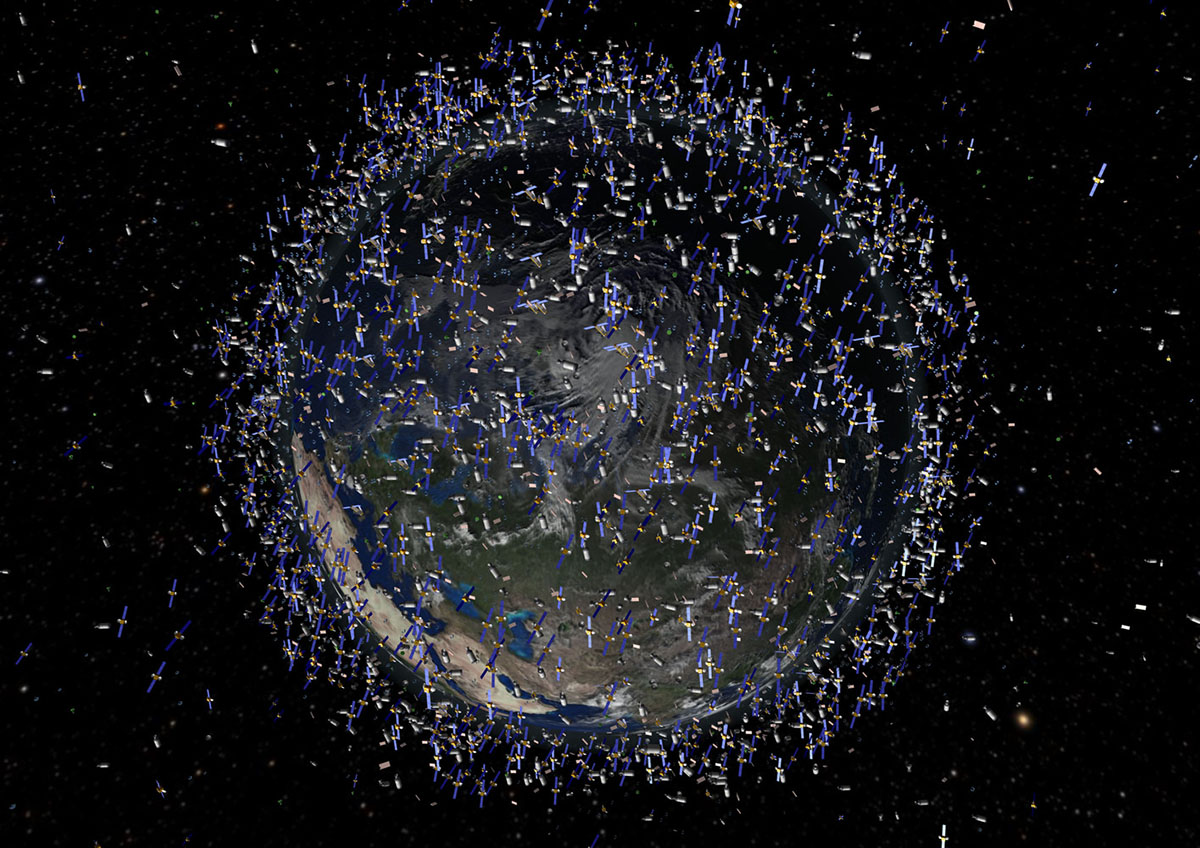
The European Space Agency's vizualisation of space debris orbiting Earth. Image Courtesy of "Are We Human" / 3. Istanbul Design Biennial
The 3rd Istanbul Design Biennial Exhibitions
The curatorial manifesto of the biennial reads:
“Humans have always been radically reshaped by the designs they produce and the world of design keeps expanding. We live in a time when everything is designed, from our carefully crafted individual looks and online identities, to the surrounding galaxies of personal devices, new materials, interfaces, networks, systems, infrastructures, data, chemicals, organisms, and genetic codes. The average day involves the experience of thousands of layers of design that reach to outer space but also reach deep into our bodies and brains.
Design has become the world and it is what makes the human. It is the basis of social life, from the very first artefacts to the exponential expansion of human capability. But design also engineers inequalities and new forms of neglect. More people than ever in history are forcibly displaced by war, lawlessness, poverty, and climate at the same time that the human genome and the weather are being actively redesigned. We can no longer reassure ourselves with the idea of “good design.” Design needs to be redesigned.”
The array of projects presented in the Designing the Body section of the biennial explores all the different ways in which the human body itself is an artefact that is continually reconstructed, from the unique way our hands work to the latest research on the brain. Designing the Planet presents a series of projects that ask us to rethink the human design of vast territories and ecologies. Designing Life looks at the new forms of mechanical, electronic and biological life that are being crafted. Designing Time presents a new kind of archaeology ranging from the deep time of the very first human tools and ornaments to the ways in which social media allows humans to redesign themselves and their artefacts in as little as 2 seconds.
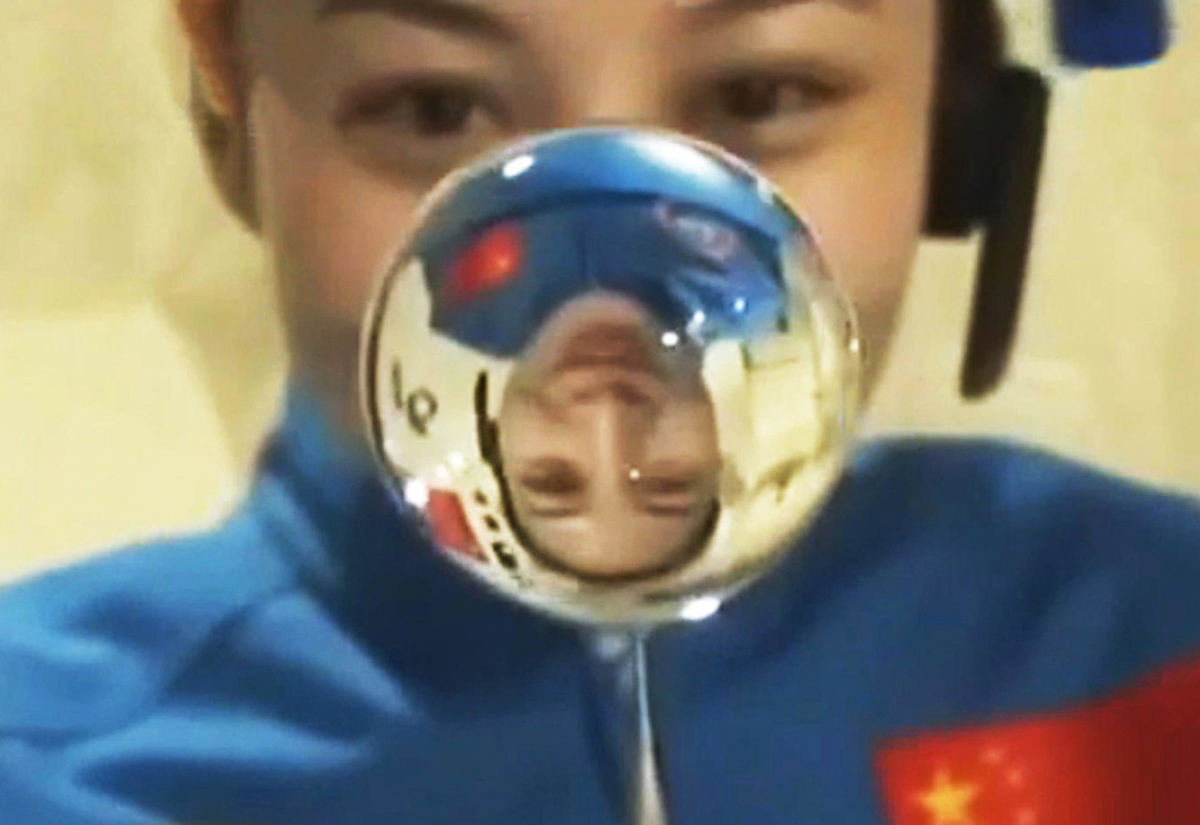
Wang Yaping demonstrates the behavior of a ball of water in space during a lecture broadcast to students on Earth in 2013. Image courtesy of SCMP Pictures.
The Academy Programme
The 3rd Istanbul Design Biennial will host many exhibitions and projects through the Academy Programme, organised in collaboration with universities from Turkey and abroad. The Academy Programme will include products and ideas created through workshops, competitions and projects by various faculties and departments of the universities in their campuses.
Istanbul Design Biennial Embraces the City with ''Creative Districts''
The inhabitants of the city will meet with design not only through the exhibition venues but also with the Creative Districts in the 3rd Istanbul Design Biennial. The project will bring together the visitors with numerous professionals from small manufacturers and big brands, design and architecture studios in their own working spaces.
Creative Districts is a project in which designers and professionals from related fields in Beyoğlu and its surroundings, Beşiktaş, Şişli, Eminönü, Kuruçeşme and Sarıyer districts will find the opportunity to present their brands in their own neighbourhoods. Design-oriented brands in the city will come to the forefront in their own neighbourhoods with the project that will be experienced as a part of everyday life. Through works that will be presented within the scope of the project, the biennial will integrate into the whole of the city and create an environment in which the phenomenon of design will be visible. Various events will also take place on the weekends throughout the biennial as a part of the Creative Districts programme.
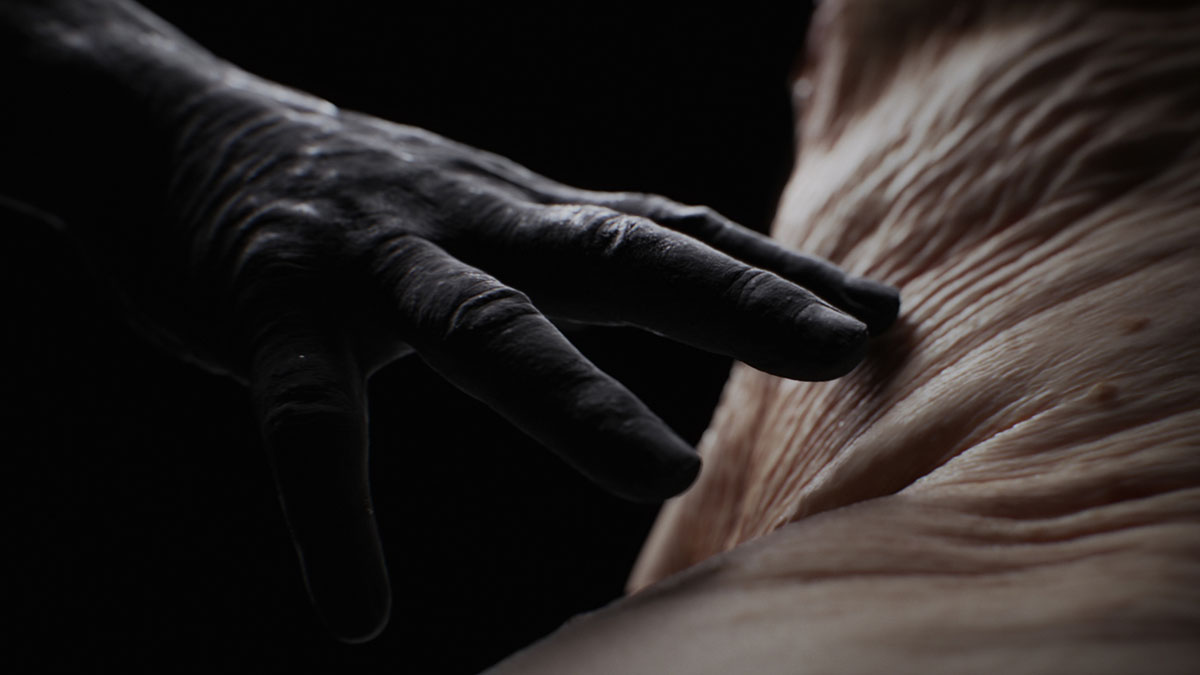
Marshmallow Laser Feast with Analog / Memex. Image Courtesy of "Are We Human" / 3. Istanbul Design Biennial
Design Routes
Design Routes of the 3rd Istanbul Design Biennial will include visits to several design offices, stores, ateliers, manufacturing sites and architectural buildings in different parts of the city, offering a brand new vision of Istanbul. The Design Routes, for example exploring Nişantaşı, Karaköy or Sultanahmet area will create the opportunity for participants to observe and get information on several disciplines and stages of design.
Results of the Open Call for video submissions
Co-curators of the 3rd Istanbul Design Biennial Beatriz Colomina and Mark Wigley invited industrial and graphic designers, architectures, artists, film produces, associations, non-governmental organisations from around the world to submit 2 minute videos that address the theme “Are We Human?” posed by the biennial.
An international and interdisciplinary jury consisting of curators Beatriz Colomina and Mark Wigley, Director of Istanbul Film Festival Kerem Ayan, Director of the Storefront for Art and Architecture Eva Franch i Gilabert, artist and film producer Amie Siegel and curator Iván López Munuera evaluated more than 200 videos from 68 cities in 36 countries and selected 5 videos to be highlighted in the biennial exhibition and catalogue. Other 141 submitted videos fulfilling the requirements of the Open Call will be presented in a dedicated section within the exhibition itself and will be online on the biennial website.
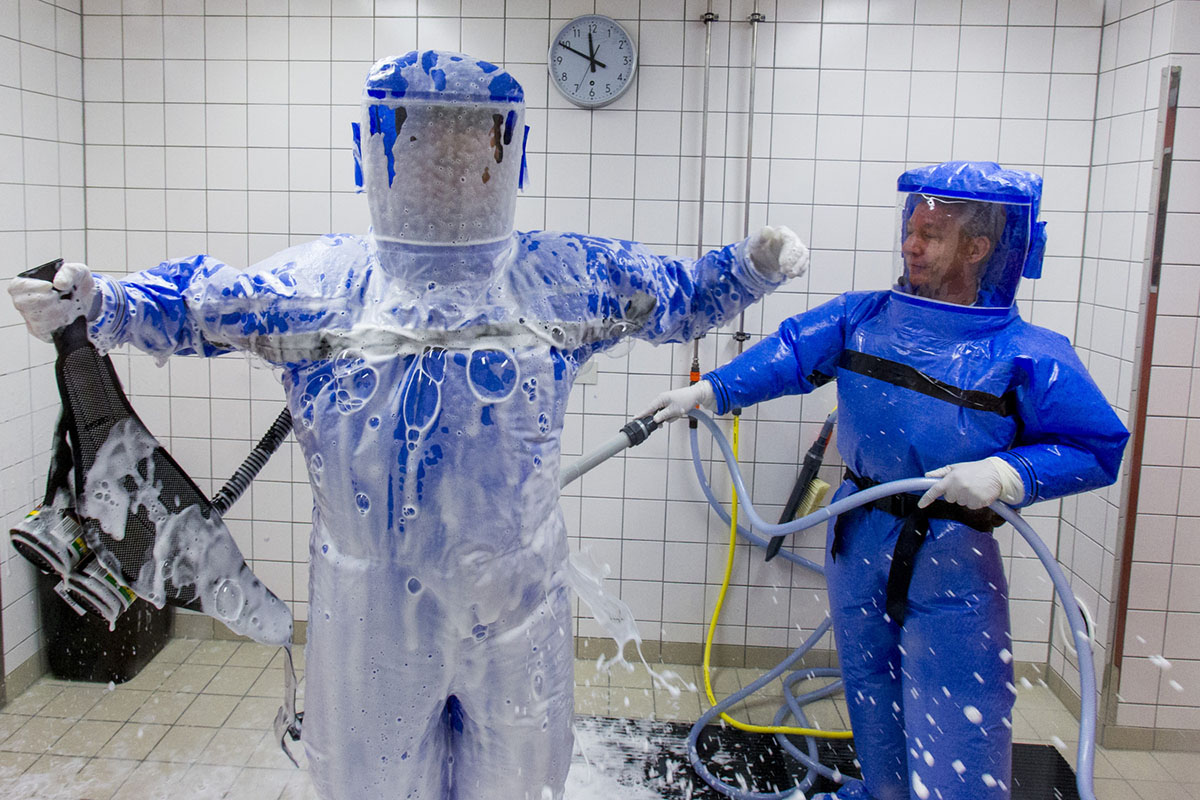
Physician Thomas Klotzkowski cleans Florian Steiner, a doctor for tropical medicine, in Berlin. Image Courtesy of "Are We Human" / 3. Istanbul Design Biennial
The selected videos to be highlighted in the biennial are:
Alper Raif İpek (Ankara, Turkey)
Dimitris Venizelos (New York, USA)
Görkem Özdemir (Istanbul, Tukey)
Jonathan Hadari & Simona Katsman (Tel Aviv, Israel)
Merve Bedir & Alican İnal (Rotterdam, Netherlands / Istanbul, Turkey)
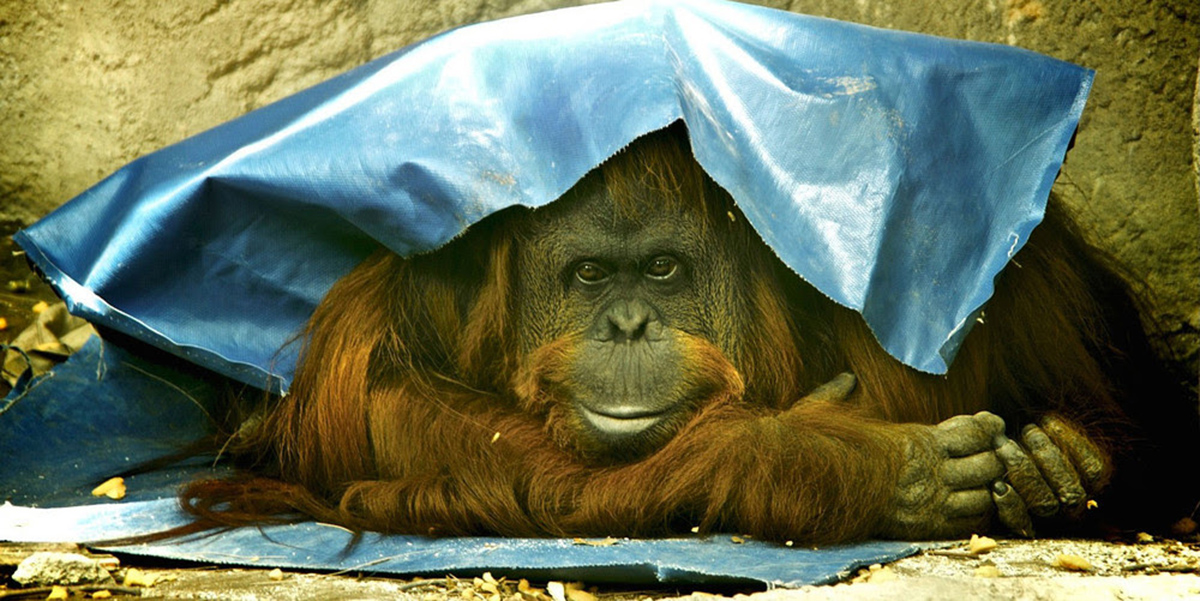
In 2014, an Argentina court ruled that Sandra was a sentient being with thoughts, feelings and that she was a “non-human person” who has been wrongfully deprived of her freedom in the zoo. Image courtesy of Roger Schultz/Flickr.
A joint project by the Istanbul Design Biennial and e-flux: ''Superhumanity''
The 3rd Istanbul Design Biennial inaugurates a special collaboration with e-flux, a publishing platform and archive for artist projects and curatorial platforms. Superhumanity is the first project by e-flux Architecture, initiated by Nikolaus Hirsch and Anton Vidokle (e-flux) in collaboration with Beatriz Colomina and Mark Wigley. e-flux Architecture is a new platform for publishing and disseminating new ideas in architecture and design.
Superhumanity will introduce contributions from different fields that respond to the biennial’s theme ARE WE HUMAN? by exploring and challenging our understanding of the relationship between concepts of “self” and “design”. Superhumanity aims to probe the radical implications of the idea that we are and always have been continuously reshaped by the artefacts we shape. These contributions will initially appear online as a series of dispatches circulated by e-flux as well as an installation in the biennial exhibition, and subsequently as a book. The list of authors includes over fifty writers, scientists, artists, architects, designers, philosophers, historians, archaeologists and anthropologists. Contributions will be published every other day starting mid-September.
Contributors include: Lucia Allais, Julieta Aranda, Shumon Basar, Ruha Benjamin, Franco 'Bifo' Berardi, Daniel Birnbaum & Sven-Olov Wallenstein, Ina Blom, Benjamin H. Bratton, Giuliana Bruno, Zeynep Çelik Alexander, Tony Chakar, Mark Cousins, Keller Easterling, Ruben Gallo, Liam Gillick, Joseph Grima, Boris Groys, Rupali Gupte & Prasad Shetty, Güven Güzeldere, Andrew Herscher, Tom Holert, Brooke Holmes, Hu Fang, Francesca Hughes, Andrés Jaque, Lydia Kallipoliti, Tom Keenan, Brian Kuan Wood, Laura Kurgan, Sanford Kwinter, Adrian Lahoud, Sylvia Lavin, Tom Levin, Lesley Lokko, MAP Office, Chus Martínez, Ingo Niermann, Ahmet Ögüt, Trevor Paglen, Spyros Papapetros, Paul Preciado, Raqs Media Collective, Juliane Rebentisch, Sophia Roosth, Martha Rosler, Felicity Scott, Jack Self, Hito Steyerl, Kali Stull & Etienne Turpin, Pelin Tan, Alexander Tarakhovsky, Paulo Tavares, Territorial Agency, Stephan Trüby, Eyal Weizman, Mabel O. Wilson, Liam Young, and Arseny Zhilyaev & Anton Vidokle.
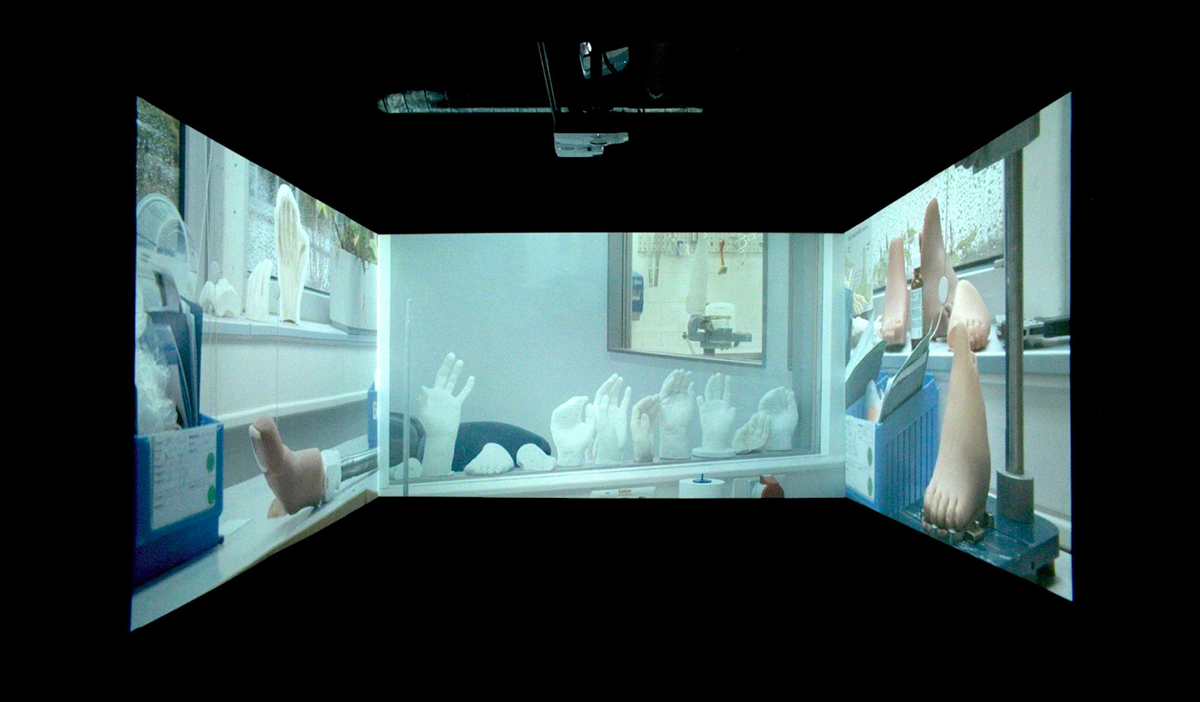
'Stills from "The Unstable Object (II)",' 2015, · Daniel Eisenberg. Image courtesy of Artsy
Two centuries of design in Turkey under spotlight
Parallel to the theoretical framework of the 3rd Istanbul Design Biennial, a major chronological inventory is being assembled entitled Turkey Design Chronology. It is an attempt to bring together fields such as packaging, graphic design, communication and advertisement, housing, furniture, landscape, industrial buildings, and others which have not been addressed from the perspective of design yet, like lighting, toys, music, ceramics, health or non-governmental organisations, within a time frame starting from the Ottoman Tanzimat reform era (beginning around 1839) until today. It is an effort to list thresholds, indicate a beginning point in our design history, in the social, spatial, urban or historical sense, so that a platform can be achieved to create fruitful discussions in history writing. Topics are being prepared in the coordination of Pelin Derviş, with the contribution of many people who are experts in their fields.
Within this framework, another component of the project entitled Archive of the Ephemeral seeks to become a visual source on objects and spaces, through a collection of family photos and found photographs. This huge group that calls itself Curious Assembly seeks to spark debate and reach others who may partake in these dialogues by highlighting an interconnected selection. To this end, part of Studio-X Istanbul will be turned into a research laboratory during the biennial, and topics highlighted in the chronology will be the focus of a series of events and panels. The events will be organised around provocative “curiosity desks” (mini exhibitions) prepared by the Curious Assembly. Additionally, in parallel to this project, Studio-X Istanbul is establishing a research library of design in Turkey, which will serve as an open source for designers during and after the biennial.
Sustainability in Fashion Design workshop with H&M
A workshop called “Sustainability in Fashion Design” was held within the scope of the 3rd Istanbul Design Biennial, under the sponsorship of H&M, and in collaboration with the Consulate General of Sweden and Swedish Institute. 20 young designers and students of textile and fashion design attended the workshop held by Hülya Sevindik Özyiğit, H&M’s Global Material Team Business Development Manager, Swedish designer Johanna Törnqwist and Mehtap Elaidi, fashion designer and the President of Turkish Fashion Designers Association. Based on the possibility of fashion to be sustainable and eco-friendly, the workshop encouraged the participants to work in recycled materials only.
Designs of the participants will be displayed as an installation curated by Demirden Design/ Studio Paradiso, at Adahan Istanbul Hotel from 12 October through 20 November. Also, one designer among the participants will be awarded by a jury consisting of the CEO of Föreningen Handarbetets Vänner / Friends Of Handicraft Lotta Ahlvar, H&M Turkey’s PR Manager Pelin Atay Kuran, Chief Editor of Glamour Magazine Özge Sarıkadılar, Istanbul Moda Academy’s fashion design educator Raf Stesmans, creative consultant Ece Sükan, fashion writer / communication consultant Barış Çakmakçı, fashion blogger Billur Saatçi and fashion writer Zeynep Tosun.
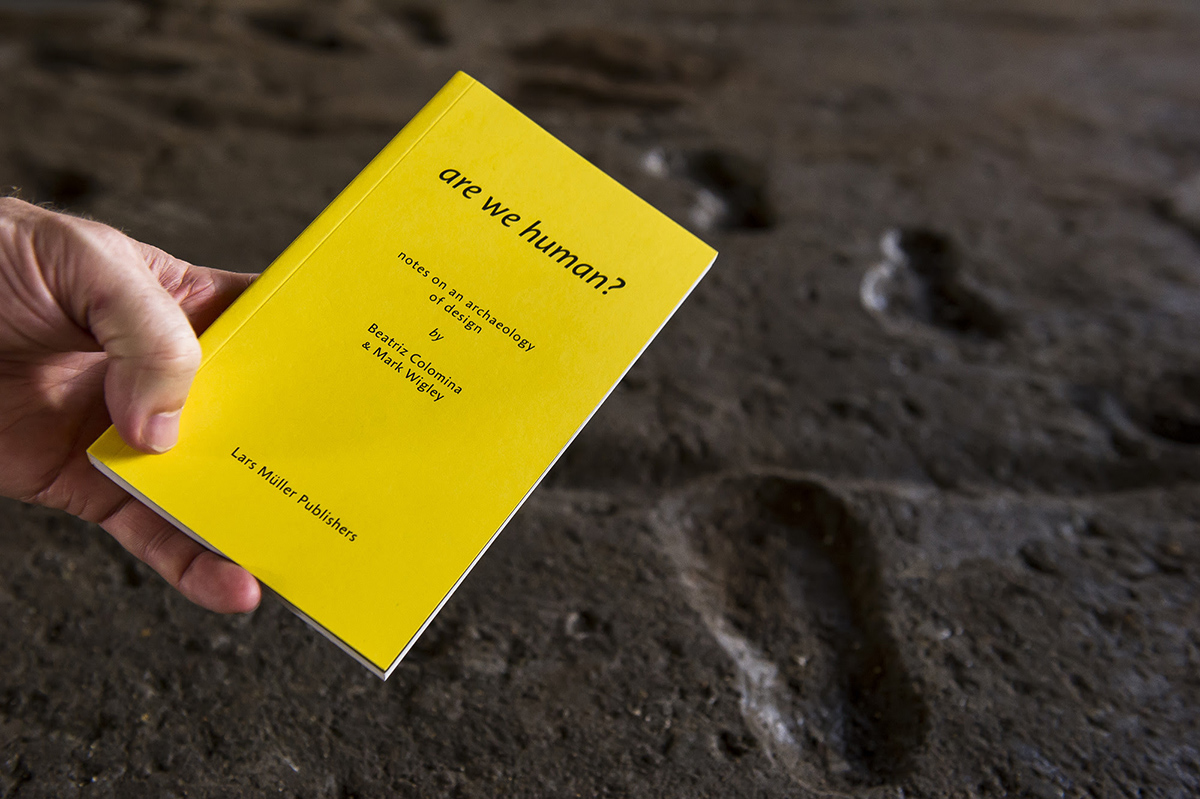
First copy of new book next to cast of Neolithic footprints being produced at the Istanbul Archaeological Museums for the 3rd Istanbul Design Biennial, 2016. Image © Poyraz Tütüncü. Courtesy of IKSV.
The 3rd Istanbul Design Biennial Publications
The publications of the 3rd Istanbul Design Biennial include a book of reflections on the biennial theme by Beatriz Colomina and Mark Wigley entitled Are We Human?: Notes on the Archeology of Design; a guide for the visitors to include details on the exhibitions and the associated events; and a catalogue with texts on all the exhibited projects by the contributors themselves, presentations of the Open Call, Superhumanity and Turkey Design Chronology projects and presentations of the exhibition design, graphic design and social media experiments made in the biennial. While the book will be co-published by İKSV and Lars Müller Publishers, the guide will be published by İKSV, and the catalogue will be distributed by Yapı Kredi Publications.
The publications will be available at Galata Greek Primary School, Alt Art Space, and selected bookshops by 22 October. The guide and the catalogue will also be accessible online for free through İKSV Kitaplık application, available on AppStore.
Top image: Co-curators Beatriz Colomina & Mark Wigley, media meeting. Image © Fatih Kucuk, courtesy of Are We Human/IKSV
> via IKSV
